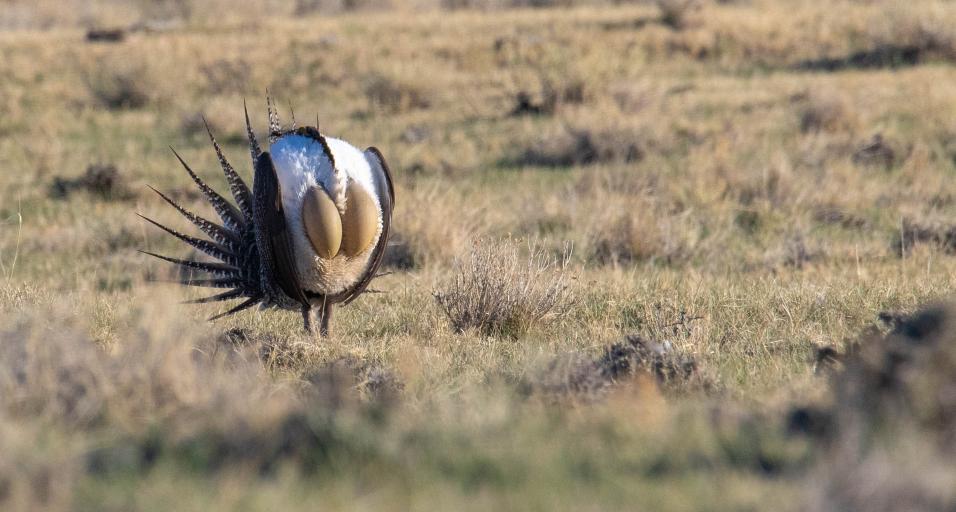Spring sage grouse lek attendance held steady in 2020 according to new data analyzed by the Wyoming Game and Fish Department. The leveling-out indicates birds may be reaching the trough of their roughly eight year population cycle.
An average of 19.7 male sage grouse per active lek were counted, and over 18,500 peak male sage grouse were observed on 80% of known, occupied leks.
Annual counts are carried out by Game and Fish, Bureau of Land Management, consultants and volunteers. Birds are counted either aerially or on-the-ground through observations from a distance during their spring mating.
This year flights to count sage grouse were cancelled due to COVID-19 concerns, so less known leks were visited. The typical visitation rate is 87-90% .
Game and Fish also monitors the percent of known active and inactive leks throughout Wyoming. A lek is considered inactive if no birds or signs of strutting are observed under ideal conditions during mating season. In the last year, active leks dropped by 4%.
“When the number of active leks goes down, it indicates birds are spread out over less leks,” Leslie Schreiber, Game and Fish sage grouse/sagebrush biologist said. “Essentially, if birds are not attending the lek we can’t count them and can’t report their presence through lek attendance data.”
Schreiber says the small redistribution is not cause for concern, though.
“It’s just something we need to be aware of and note,” she said.
Game and Fish data on sage grouse lek attendance goes back nearly six decades and charts the cyclical nature of the bird’s population.
“Sage grouse populations rise and fall, and a recent study indicates Wyoming’s population cycles every six to eight years,” Schreiber said.
The cause of these well-established cycles is not understood, but it is thought to be influenced by weather and climate, which in turn impacts the availability of food and cover in the sagebrush ecosystem.
“Sage grouse are a sagebrush obligate species and could not survive without it,” Schreiber said. “Conserving sage grouse habitat is of vital importance to the well-being of the bird.”
The Wyoming sage grouse populations hit an all-time low in the early 1990s following an extended drought and habitat loss. In 2020, statewide lek counts were 16% above the most-recent low seen in 2013.
Wyoming sage grouse lek attendance holding steady in 2020
Sara DiRienzo (307-777-4540)



